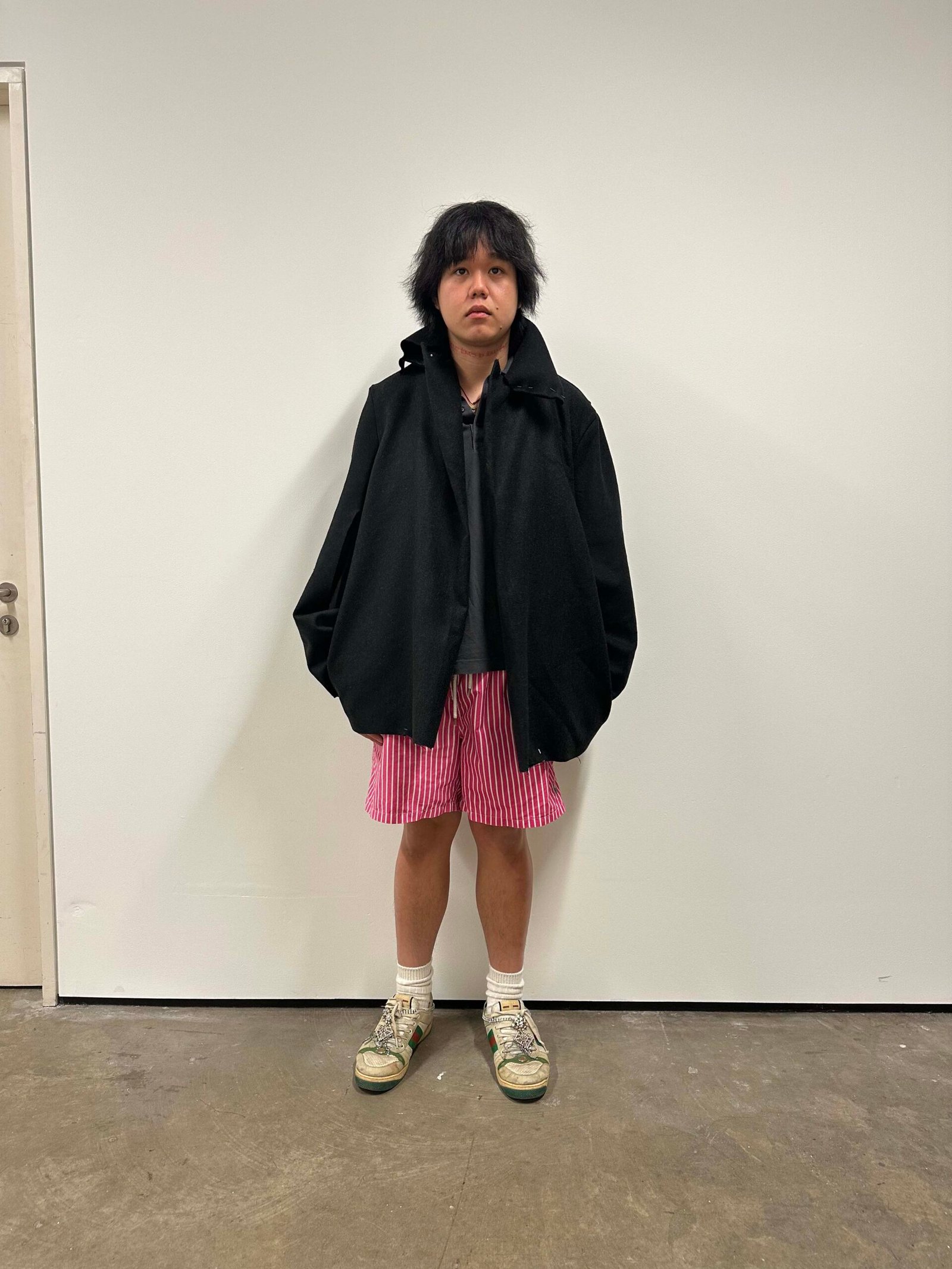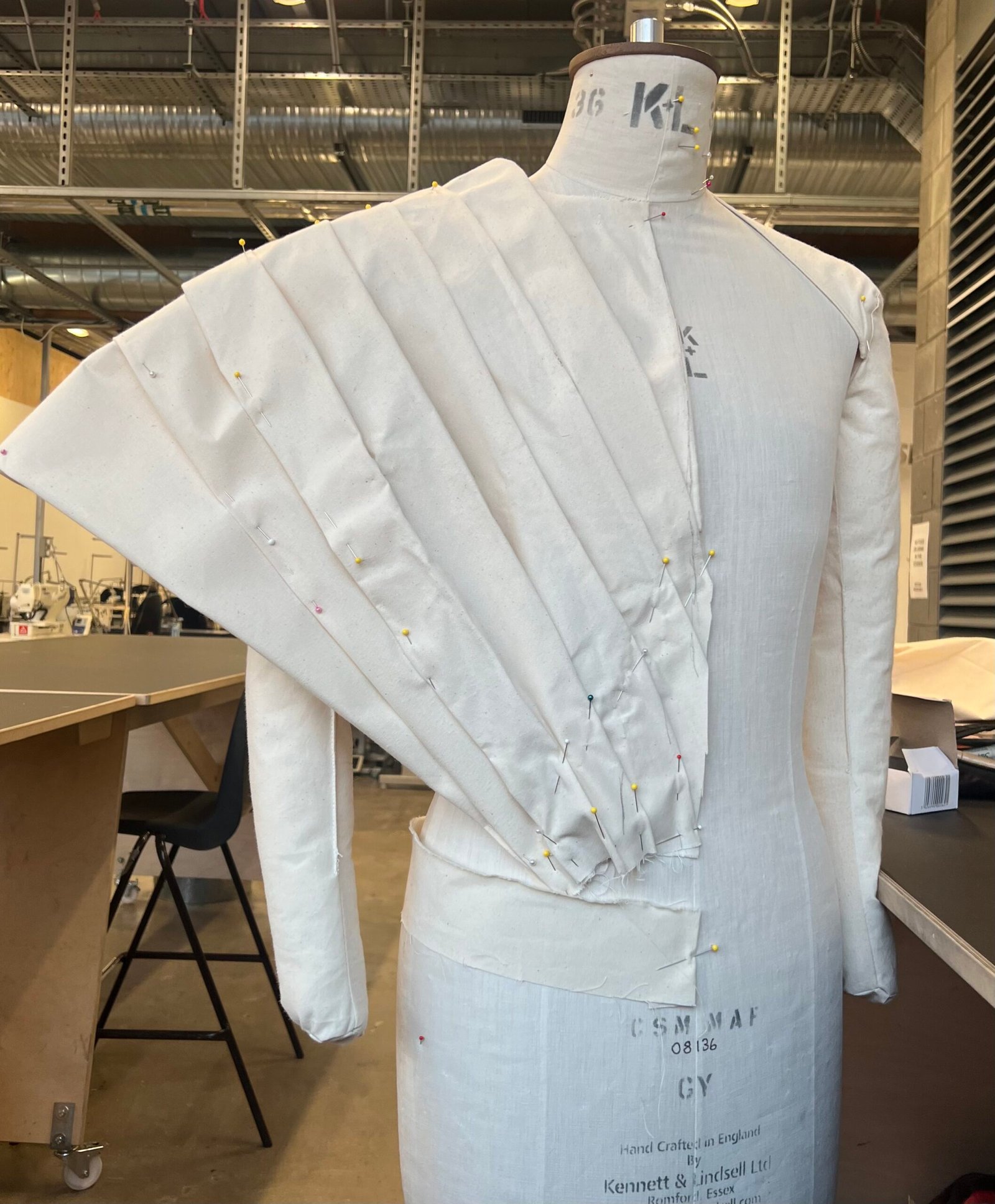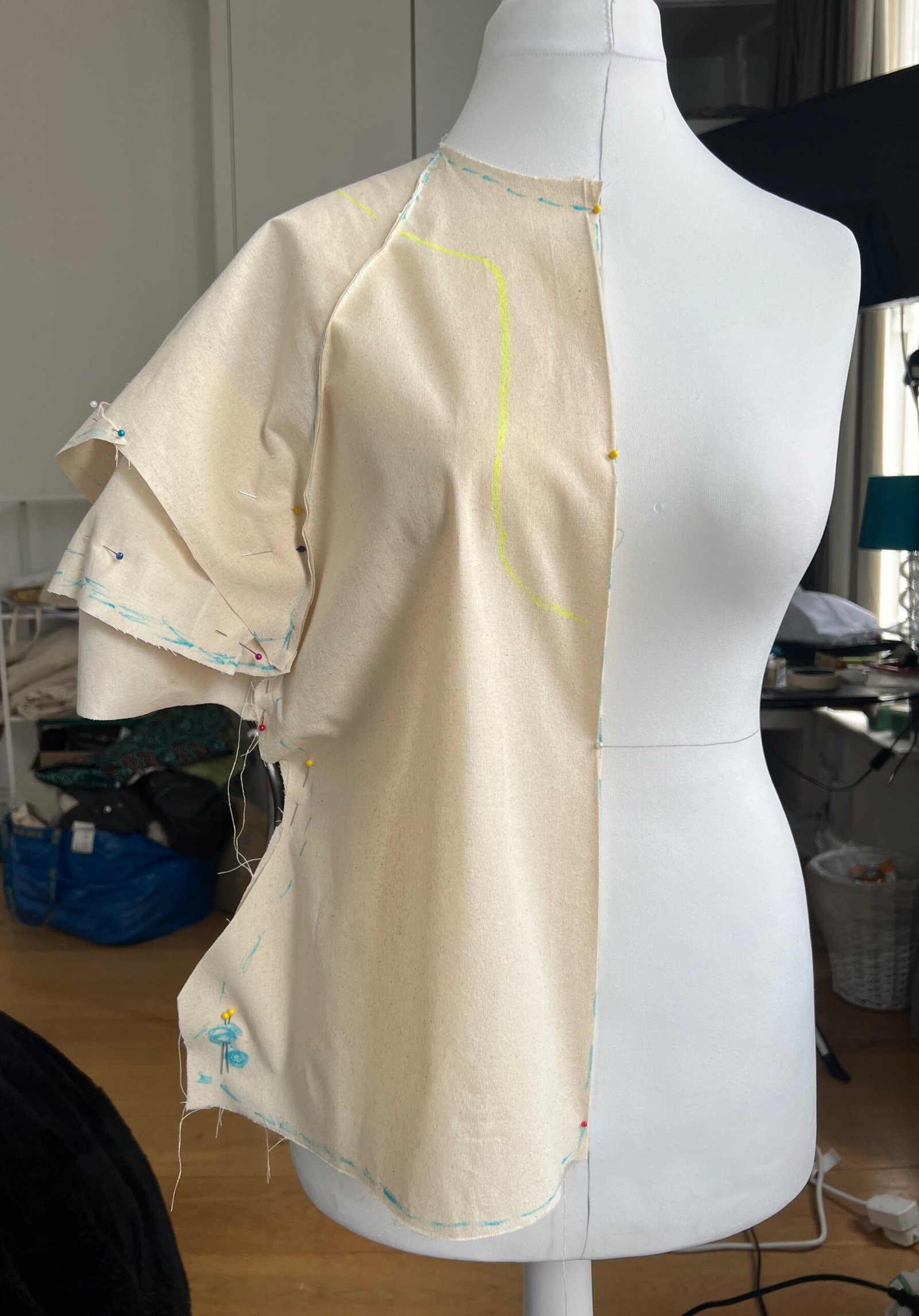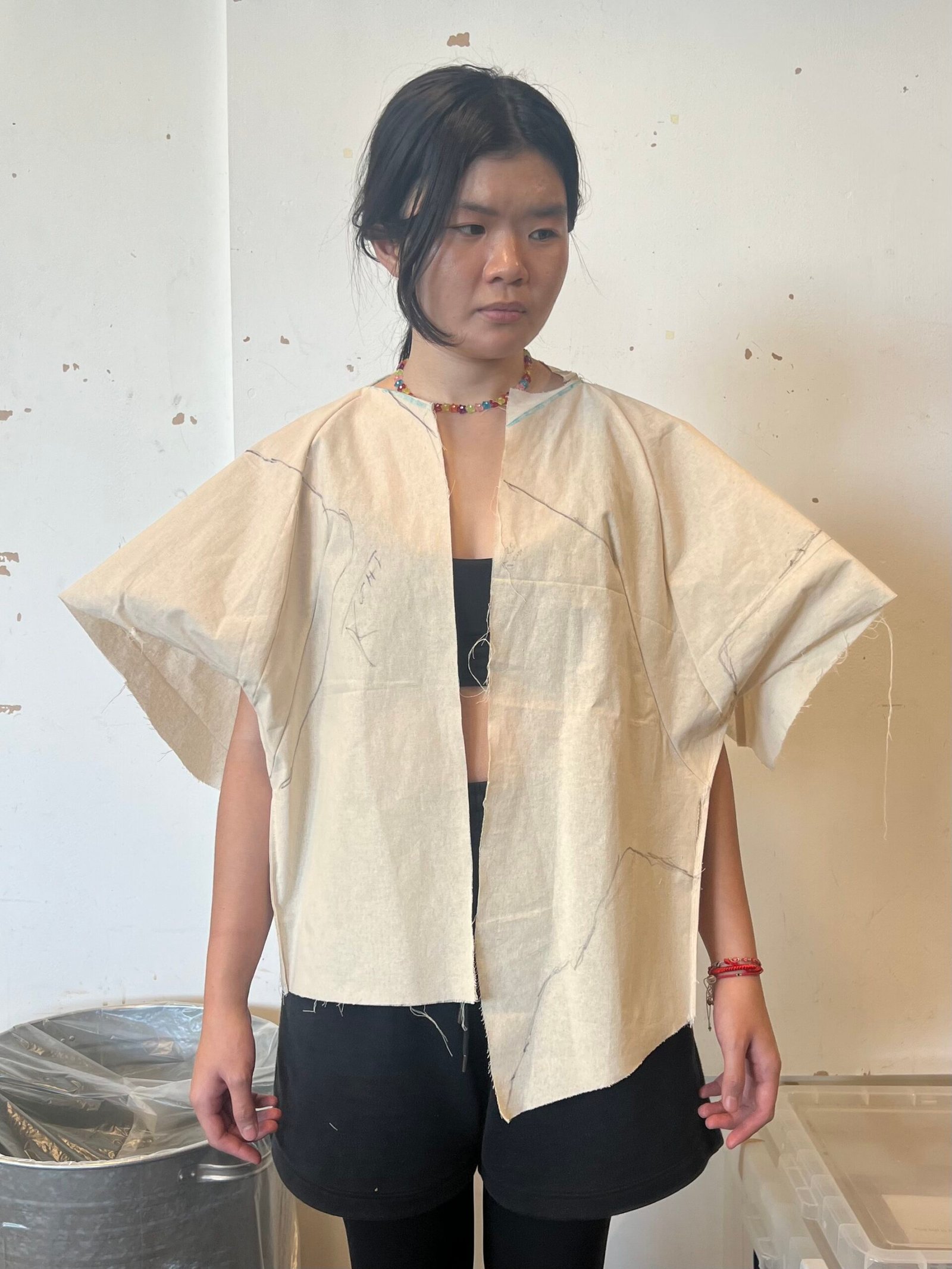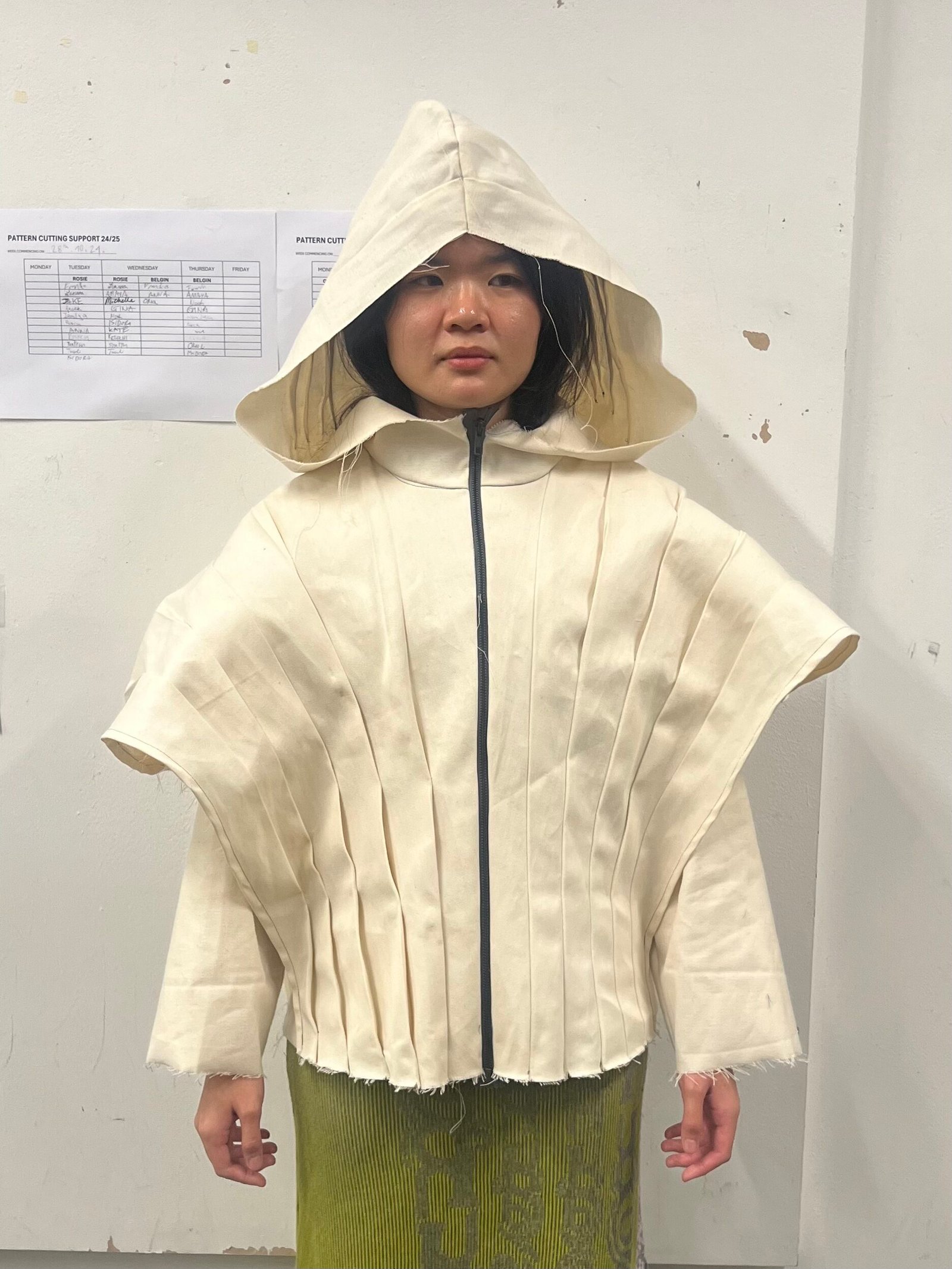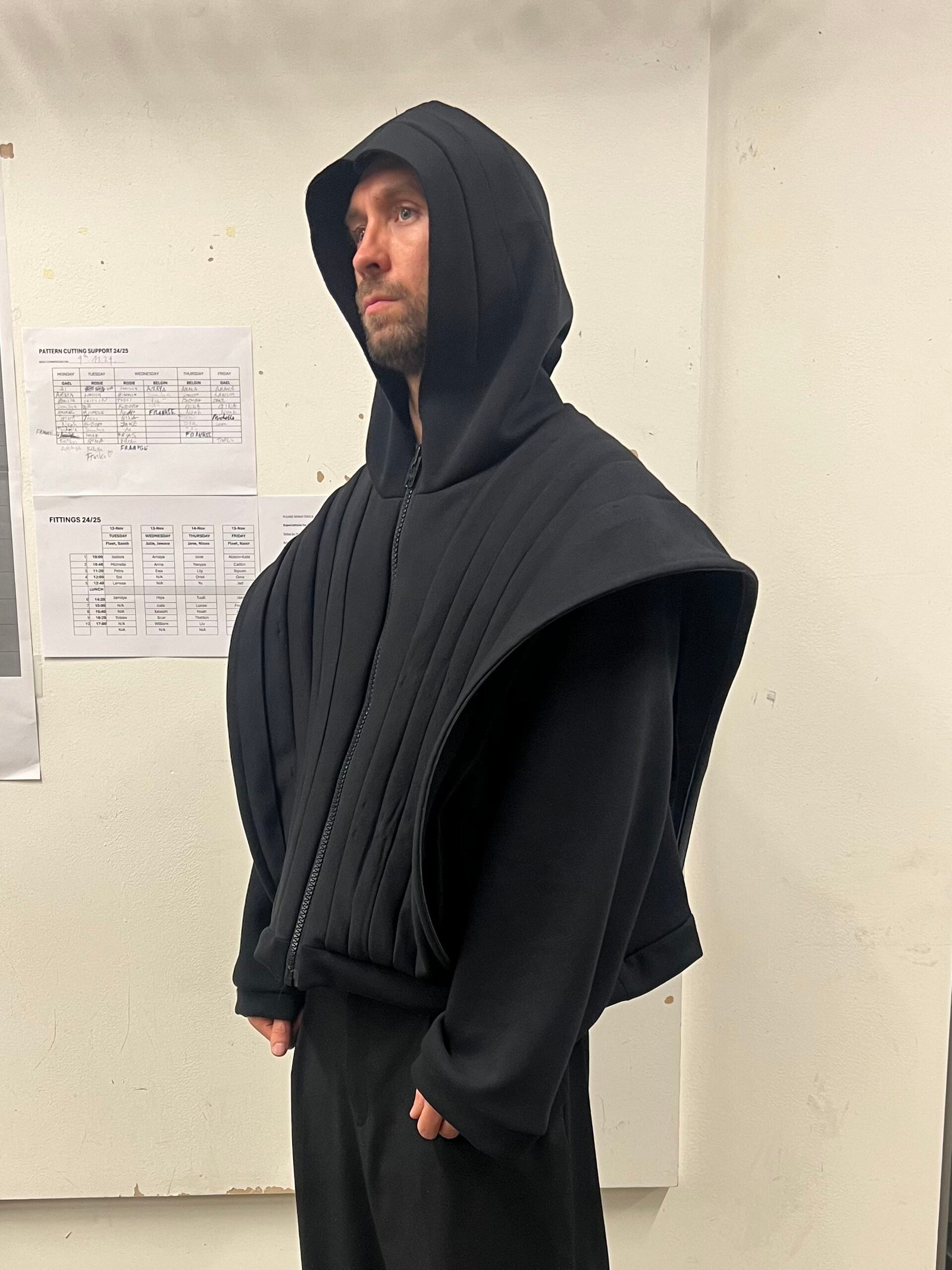Usually, the CSM runway is overtaken by a sense of rebellion, with graduates often feeling frustrated by the industry, with the post-Covid/post-Brexit classes expressing an intense desire to be seen, or to be hired. This year, however, felt different. The designers appeared to treat the act of creating fashion as a privilege – something they want to continue post-graduation. It makes sense, given that this generation has been exposed to the bare realities of the industry. They know what they’ve signed up for, yet they’ve decided to move forward. Many of them have studied their craft for over six years, and the majority want to launch their own labels and continue their practices after graduation. Is this aspiration to start a brand only a “symptom” of the designers who made it in the show, or is it a reflection of an industry with no better options?
This year’s cohort demonstrates a strong sensibility toward tactility, fabric, and technique. Each collection offers a deep exploration of identity, memory, imperfection, heritage, and modernity. Tuuli Turunen’s Nightwalk evokes the mysterious, dreamlike quality of nighttime cities with garments that feel worn, lived-in, and connected to the past, using repurposed fabrics like old curtains and blankets. Petra Fagerstrom’s Recollection//404 delves into how AI distorts memory, employing glitch-inspired design elements to challenge traditional ideals of femininity and history. Kelechukwu Mpamaugo’s used custom Isiagu-printed lace, reimagining the traditional Igbo fabric and layered it over denim to explore the intersection of West African traditions and Black American culture and Isidora Durovic draws inspiration from the timeless, functional wardrobes of women artists, focusing on low-maintenance, machine-washable fabrics and subtraction cutting.
While the concepts are strong, the emphasis is clearly on the materials. This refreshing focus on the art of making, coupled with confident expertise in craft and sustainability, led us to question whether the future for emerging talents should be the one that is mapped out for them: a presentation space at London Fashion Week, a support scheme’s showroom in Paris for a season or two, or perhaps a spot on the website of an online stockist after a small order. The predictability of this system for young designers is limited and ephemeral, and today’s creators are both industry- and craft-literate enough to outgrow it.”
The question remains: will they resist the urge to mould themselves into what the emerging fashion ecosystem expects of them to give LFW another season of newness? Or will they harness their creative drive to forge more original and fulfilling paths?































































































































































































































